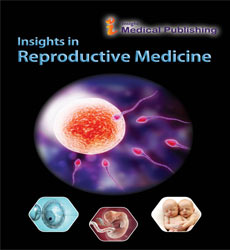The Natural Selection and Evaluation of Genetic Variation
Stefan Pfister*
Department of Paediatric Oncology, Haematology and Immunology, Heidelberg University Hospital, Heidelberg, Germany
- *Corresponding Author:
- Stefan Pfister
Department of Paediatric Oncology
Haematology and Immunology
Heidelberg University Hospital
Heidelberg, Germany
E-mail: stefan-p@fister.de
Received Date: September 13, 2021; Accepted Date: September 27, 2021; Published Date: October 04, 2021
Citation: Pfister S (2021) The Natural Selection and Evaluation of Genetic Variation. Insights Reprod Med Vol.5 No.1:009.
Description
Genetics is a branch of biology concerned with the study of genes, genetic variation, and heredity in organisms. Gene structure and function, variation, and distribution are studied within the context of the cell, the organism for example dominance, and within the context of a population. There are five types of genetics molecule genetics, developmental genetics, population genetics, quantitative genetics, phyllo genetics. They are the essential physical and functional units of heredity. In humans, genes vary in size from a couple of hundred DNA bases to quite two million bases. The human genome project has estimated that humans have between 20,000 and 25,000 genes. Every person has two copies of every gene, one inherited from each parent. An allele is one among two or more versions of a gene. An individual inherits two alleles for each gene, one from each parent. If the 2 alleles are an equivalent, the individual is homozygous for that gene. If the alleles are different, the individual is heterozygous. The benefits of genetics are that they can benefit individuals, couples and families who have genetic concerns such as Family history of cancer, Family history of diseases that can be hereditary for example cancer, heart problems, alzheimer's disease, parkinson's disease. There is little value in genetic tests that don't allow you to require action to scale back or change your risk for a specific disease. In other words, genetic testing may be a good idea only the pros of genetic testing outweigh the cons for your situation.
There are six genetic changes mutations, natural selection and evaluation, model organisms, medicine, research methods, DNA sequencing and genomics. In the polymerization of the second strand errors occasionally occur in DNA replication. These errors are called as mutations; mutations can affect the phenotype of an organism, especially if they occur within the protein coding sequence of a gene. Mutations alter an organism's genotype and infrequently this causes different phenotypes to seem. Most mutations have little effect on an organism's phenotype, health, or reproductive fitness. Mutations that do have an impact are usually detrimental, but occasionally some are often beneficial. Studies within the fly drosophila suggest that if a mutation changes a protein produced by a gene, about 70 percent of those mutations are going to be harmful with the remainder being either neutral or weakly beneficial. Organisms were chosen, in part, for convenience short generation times and easy genetic manipulation made some organisms popular genetics research tools. Widely used model organisms include the gut bacterium Escherichia coli, the plant Arabidopsis thaliana, baker's yeast is also known as Saccharomyces cerevisiae, the nematode caenorhabditis elegance, the common fruit fly is also known as Drosophila melanogaster, and the common house mouse. Medical genetics seeks to know how genetic variation relates to human health and disease when checking out an unknown gene which will be involved during a disease, researchers commonly use genetic linkage and genetic pedigree charts to seek out the situation on the genome related to the disease.
The use of ligation enzymes allows DNA fragments to be connected. By ligating fragments of DNA together from different sources, researchers can create recombinant DNA, the DNA often associated with genetically modified organisms. Recombinant DNA is usually utilized in the context of plasmids: short circular DNA molecules with a couple of genes on them. In the process referred to as molecular cloning, researchers can amplify the DNA fragments by inserting plasmids into bacteria then culturing them on plates of agar. DNA sequencing, one among the foremost fundamental technologies developed to review genetics, allows researchers to work out the sequence of nucleotides in DNA fragments. The technique of chaintermination sequencing, developed in 1977 by a team led by Sanger, remains routinely wont to sequence DNA fragments. Using this technology, researchers have been able to study the molecular sequences associated with many human diseases.
Open Access Journals
- Aquaculture & Veterinary Science
- Chemistry & Chemical Sciences
- Clinical Sciences
- Engineering
- General Science
- Genetics & Molecular Biology
- Health Care & Nursing
- Immunology & Microbiology
- Materials Science
- Mathematics & Physics
- Medical Sciences
- Neurology & Psychiatry
- Oncology & Cancer Science
- Pharmaceutical Sciences
